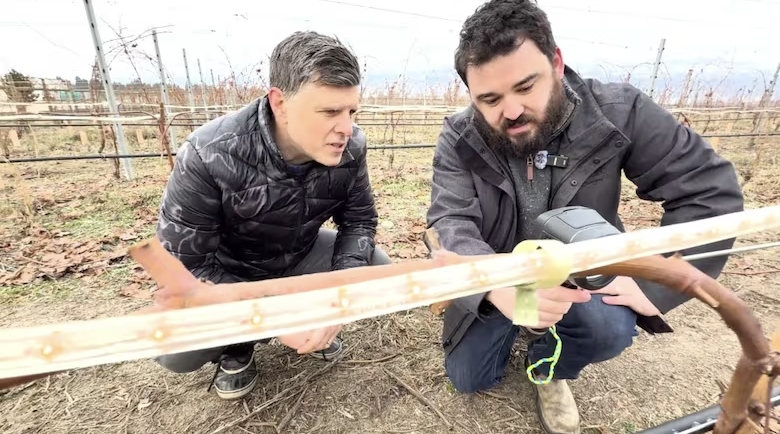B.C. Vineyards Experiment with New Techniques to Protect Grapes from Extreme Cold
Lucas Tremblay
2/3/20252 min read


Beneath a thick layer of straw, a young grapevine rests—one of many being carefully shielded from the harsh winter conditions in B.C.'s Okanagan wine country.
At Black Hills Estate Winery in Oliver, vineyard manager Bobby Arcego is testing a variety of new techniques to protect this year’s crop. The urgency is clear: last year, extreme cold wiped out 95% of B.C.'s wine grapes, threatening the region’s future as a winemaking hub.
“We saw temperatures dip down to -27°C, even -29°C in some areas, which caused extensive damage and vine death,” Arcego explained. “If we can’t protect against the cold, we have to question whether this is still a viable region for growing wine grapes.”
To mitigate the risks, vineyards across the region are exploring different protective methods, including geotextiles, hilling, and infrared heating technology.
Testing Traditional and Innovative Solutions
One of the approaches gaining traction is hilling—piling soil and composted mulch over the vine base to insulate it from the cold.
“It’s a common practice in other cool-climate wine regions,” Arcego said. “We just haven’t needed to use it here in the Okanagan—until now.”
Another method involves geotextiles, a white fabric that traps heat from the earth, offering a crucial buffer against extreme cold snaps.
“The crust of the ground freezes, but below that, there’s still warmth rising up,” Arcego explained. “Even a few degrees can make a big difference.”
Can These Techniques Save the Industry?
Ben Min Chang, a research scientist with Agriculture and Agri-Food Canada, believes that hilling is an effective method that could be widely adopted in the region. However, he notes that it requires significant labor and investment, which may slow its adoption among growers.
Chang’s research at the Summerland Research and Development Centre involves testing cold protection methods, including monitoring temperature differences between insulated and exposed vines.
He also advocates for planting cold-resistant hybrid grape varieties to replace the more delicate European grapes currently grown in the region. However, the challenge lies in whether these hybrids can produce wine that meets the industry’s high-quality standards.
“The unknown is how these hybrids will taste,” Chang said.
High-Tech Heating Solutions
Some wineries are turning to cutting-edge technology to combat the cold.
At Quail’s Gate Winery in Kelowna, where last year’s extreme weather wiped out their entire crop, winemaker Rowan Stewart is experimenting with infrared LED heating systems.
The system consists of long vacuum-sealed LED light strips that warm the vines directly, rather than heating the air.
“It works like the sun,” Stewart explained. “One of the big benefits is that it’s not affected much by wind.”
While effective, the solution is expensive—costing between $10,000 and $20,000 per acre. However, Stewart believes the investment is justified.
“Imagine it’s -26°C. If you can warm the vines by six degrees and get to -20°C, you go from a total crop failure to maybe just a bad season—or even saving a full crop, depending on how you prune,” he said.
According to his calculations, if the system saves even one harvest, it pays for itself.
“If this trial works, we’ll expand it to a larger section of the vineyard next year,” Stewart said.
A Hopeful Future for Okanagan Wines
Despite the challenges, Stewart remains optimistic about the industry’s ability to adapt.
“Once someone figures out the best or most cost-effective method, it’ll spread quickly through the valley,” he said. “We’ll all start doing what works.”
With a combination of traditional farming techniques and modern technology, many in the industry are confident they can overcome the climate challenges—and continue producing world-class Pinot Noir and Chardonnay for years to come.
News
Stay updated with the latest BC news stories, subscribe to our newsletter today.
SUBSCRIBE
© 2025 Innovatory Labs Inc.. All rights reserved.
LINKS
